Kuih Ketayap, also known as Dadar Gulung or Kuih Lenggang, is a beloved traditional dessert that epitomizes the rich culinary heritage of Malaysia and Indonesia. These delightful green-hued crepes are wrapped around a sweet coconut filling, offering a perfect balance of textures and flavors.
The vibrant green color of the crepe comes from pandan leaves, a quintessential Southeast Asian ingredient, which imparts not only a unique color but also a fragrant, sweet aroma that is truly intoxicating.
The filling, a delicious mix of grated coconut sweetened with gula melaka (palm sugar), is simmered to perfection, ensuring a moist and flavorful heart within the soft, delicate pancake.
This dessert not only captures the essence of Southeast Asian flavors but also embodies the spirit of communal cooking and sharing. Traditionally served during festive occasions and gatherings, Kuih Ketayap is a testament to the joy of simple, homemade treats that bring people together. Making these at home offers a wonderful opportunity to delve into the art of traditional dessert-making, where every fold and stir tells a story of cultural heritage and culinary delight.
Check out our Southeast Asian kuih recipe collection.
CHINESE VERSION: 香兰椰糖椰丝卷
Kuih Ketayap (a.k.a. Dadar Gulung, Kuih Lenggang) | MyKitchen101en
Yields: 9 pieces
Ingredients:
Ingredients for coconut filling:
- 190 g coconut palm sugar
- 145 ml hot water
- 2 pandan leaves
- 190 g fresh shredded coconut
- slaked cornstarch (1 ½ tsps cornstarch + 1 tbsp water)
Ingredients for pandan pancake:
- 2 eggs (grade A)
- 200 ml + about 50 ml pandan juice*
- 1 tbsp corn oil
- ¼ tsp fine salt
- 150 g plain flour
- 3 tbsps milk powder
(*Pandan juice: Add 260 ml of water to 30 g pandan leaves, blend until smooth, extract 250 ml pandan juice.)
Instructions:
Preparing coconut filling:
1 Combine coconut palm sugar, hot water and pandan leaves in a saucepan, cook over medium heat until sugar fully dissolved.
2 Strain sugar syrup through a sieve into a cooking pan, add in shredded coconut, mix until combined.
3 Cook over medium heat until coconut filling is drying up, add in slaked cornstarch, mix well.
4 Divide coconut filling into 9 equal portions.
Preparing pandan pancake:
1 Beat the eggs lightly, add in 200 ml of pandan juice, corn oil and salt, mix until combined.
2 Sieve in plain flour and milk powder, mix until blended, then add in extra pandan juice gradually (about 50 ml, the water absorption capacity for different brands of flour is different, adjust the amount of pandan juice accordingly), until you have a slightly thin batter.
3 Strain the batter through a sieve, then set aside for 15 minutes.
4 Preheat non-stick pan (the pan I use is 20-cm), turn to medium heat, lightly coat with some oil.
5 Pour in about ¼ cup (60 ml) of batter, swirl the pan to make a thin layer.
6 Remove from pan when both sides are cooked.
Wrapping Kuih Ketayap:
1 Put 1 portion of coconut filling onto 1 piece of pandan pancake.
2 Wrap the filling properly with the pancake.
3 Kuih Ketayap is ready to be served.
Kuih Ketayap (a.k.a. Dadar Gulung, Kuih Lenggang)
Rate
Ingredients
For coconut filling:
- 190 g coconut palm sugar
- 145 ml hot water
- 2 pandan leaves
- 190 g fresh shredded coconut
- slaked cornstarch 1½ tsps cornstarch + 1 tbsp water
For pandan pancake:
- 2 eggs grade A
- 250 ml pandan juice* 200 + 50 *Pandan juice: Add 260 ml of water to 30 g pandan leaves, blend until smooth, extract 250 ml pandan juice.
- 1 tbsp corn oil
- ¼ tsp fine salt
- 150 g plain flour
- 3 tbsps milk powder
Instructions
Preparing coconut filling:
- Combine coconut palm sugar, hot water and pandan leaves in a saucepan, cook over medium heat until sugar fully dissolved.
- Strain sugar syrup through a sieve into a cooking pan, add in shredded coconut, mix until combined.
- Cook over medium heat until coconut filling is drying up, add in slaked cornstarch, mix well.
- Divide coconut filling into 9 equal portions.
Preparing pandan pancake:
- Beat the eggs lightly, add in 200 ml of pandan juice, corn oil and salt, mix until combined.
- Sieve in plain flour and milk powder, mix until blended, then add in extra pandan juice gradually (about 50 ml, the water absorption capacity for different brands of flour is different, adjust the amount of pandan juice accordingly), until you have a slightly thin batter.
- Strain the batter through a sieve, then set aside for 15 minutes.
- Preheat non-stick pan (the pan I use is 20-cm), turn to medium heat, lightly coat with some oil.
- Pour in about ¼ cup (60 ml) of batter, swirl the pan to make a thin layer.
- Remove from pan when both sides are cooked.
Wrapping Kuih Ketayap:
- Put 1 portion of coconut filling onto 1 piece of pandan pancake.
- Wrap the filling properly with the pancake.
Video
Notes
Nutrition (per serving)
Rate this recipe
Click to rate

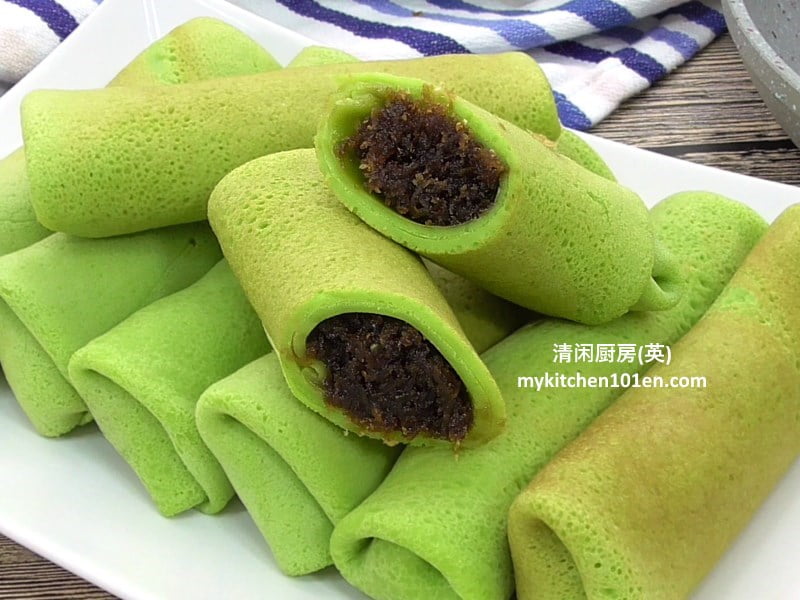
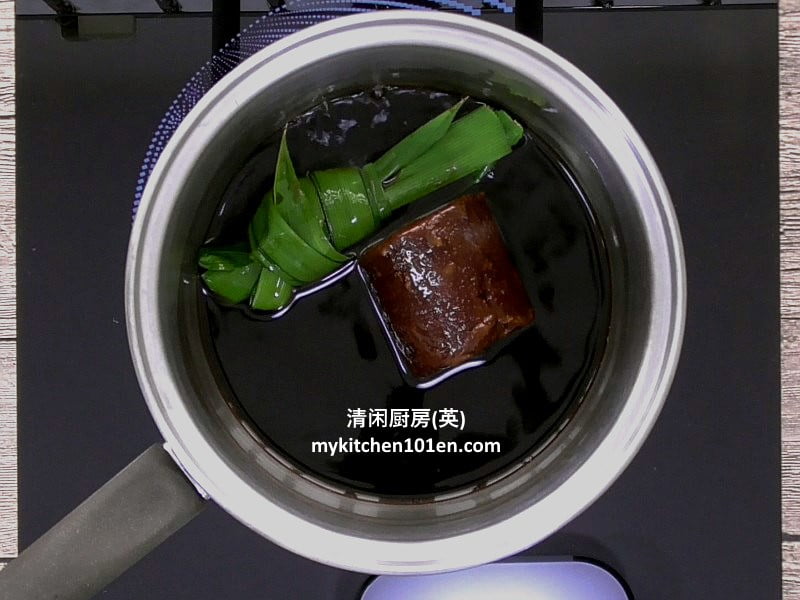
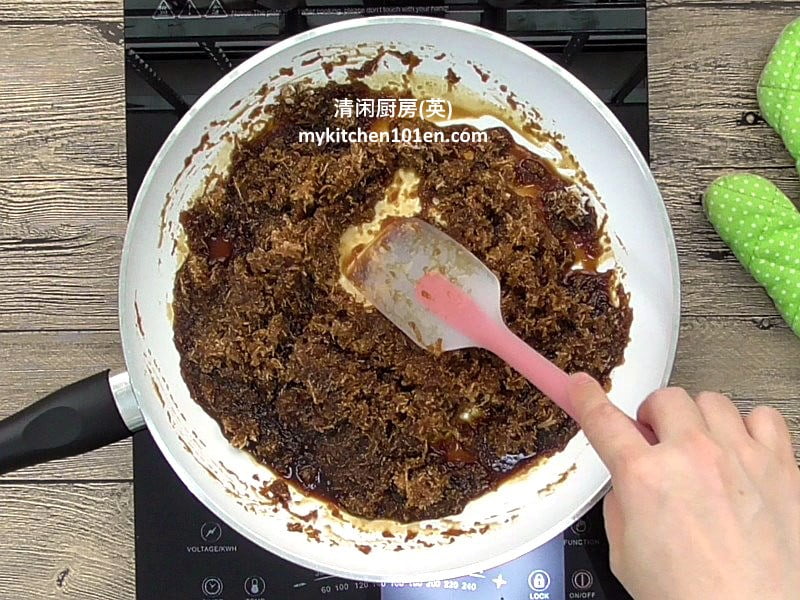
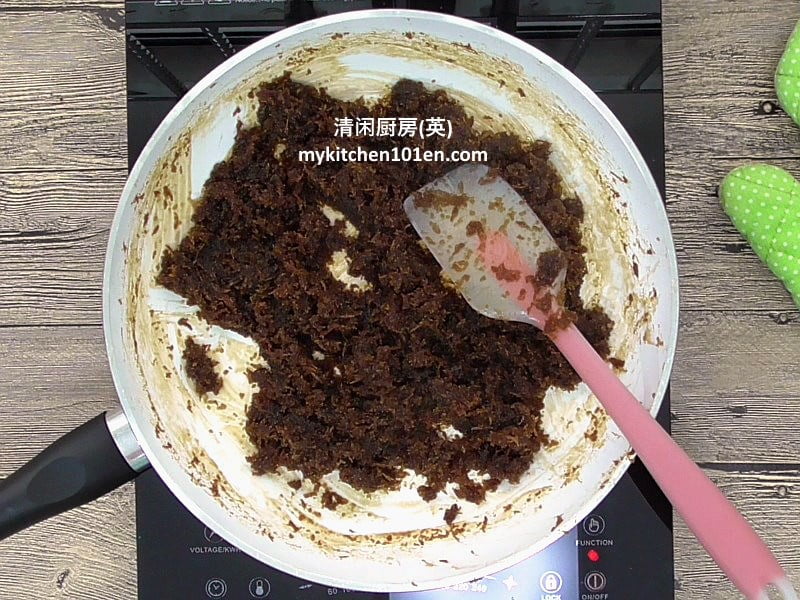
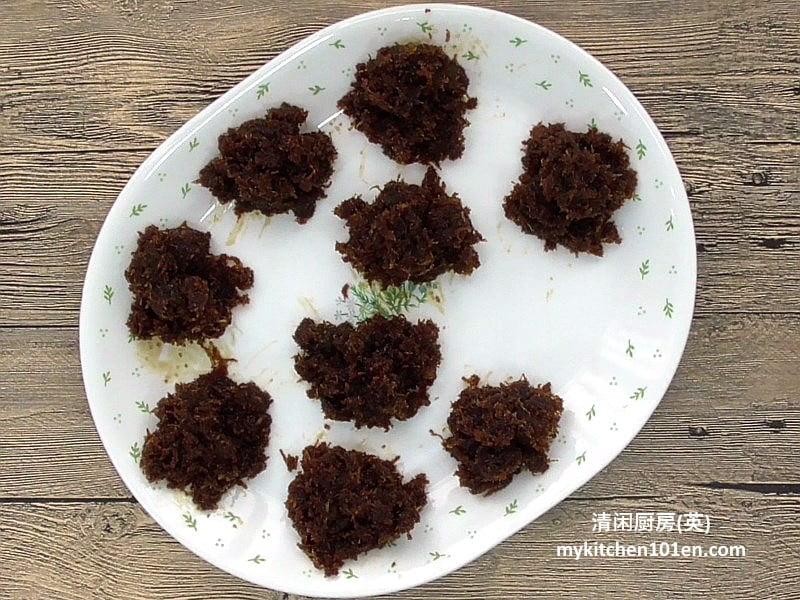
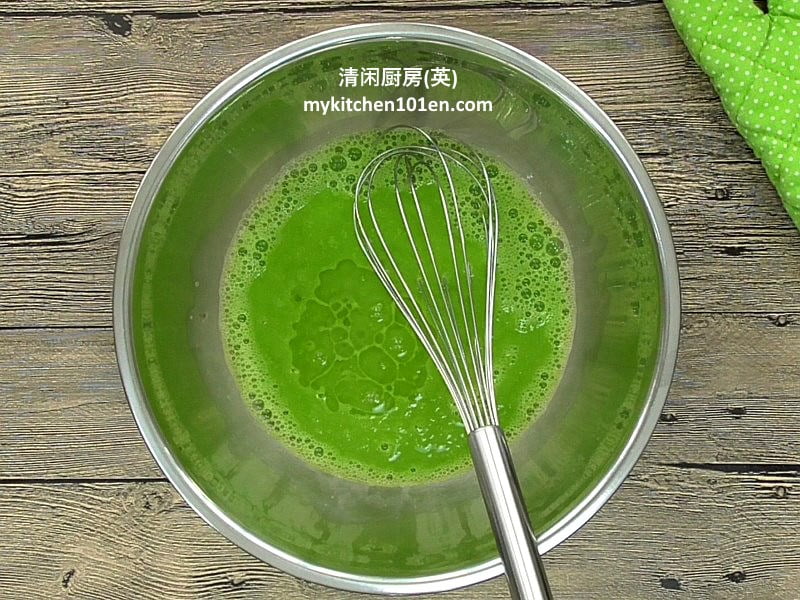
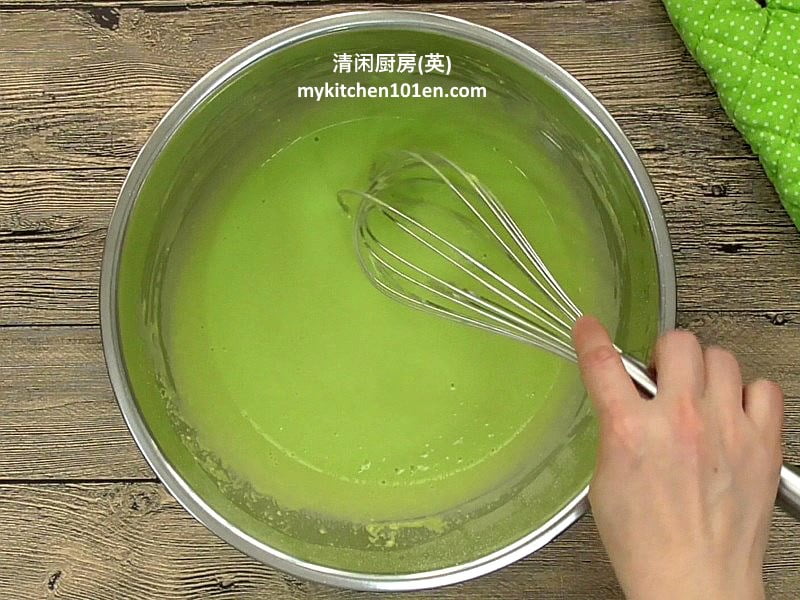
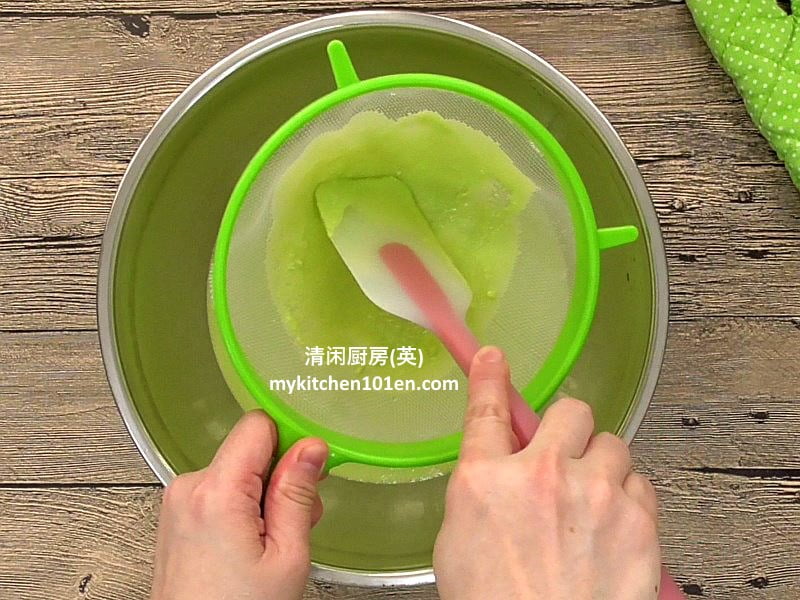
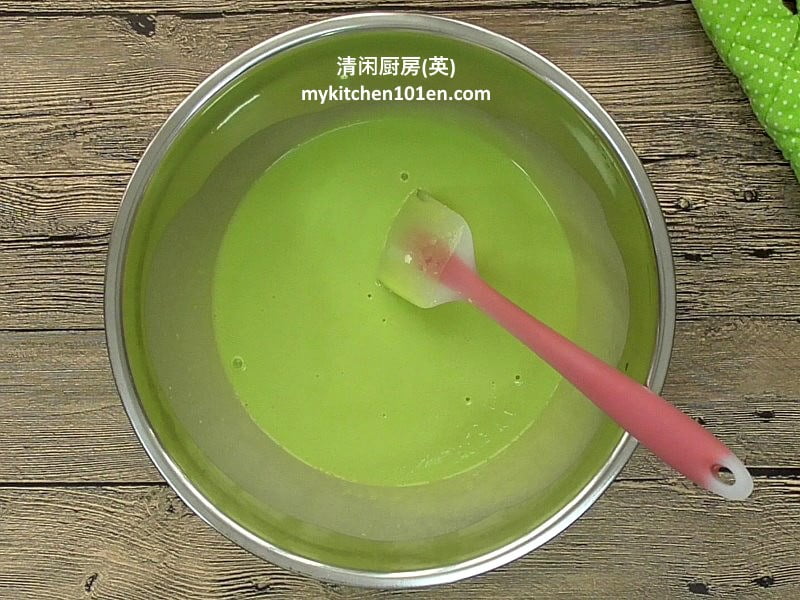

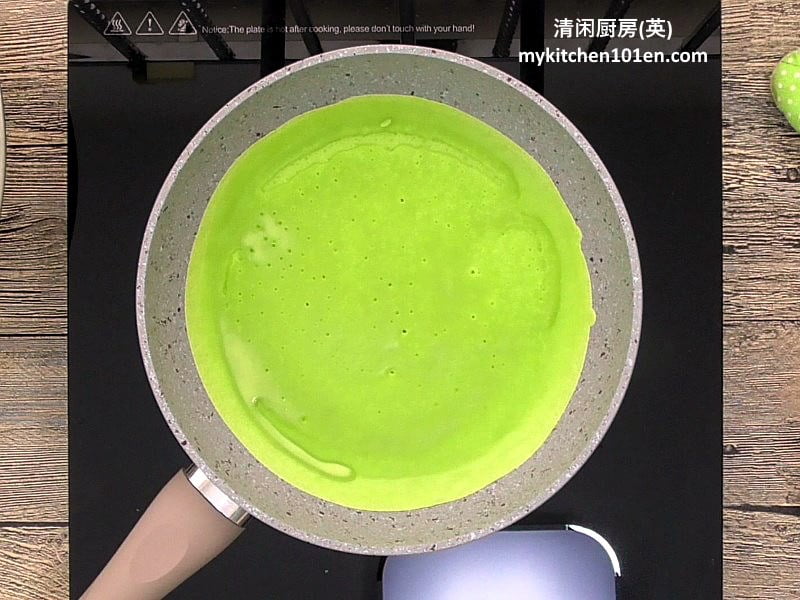

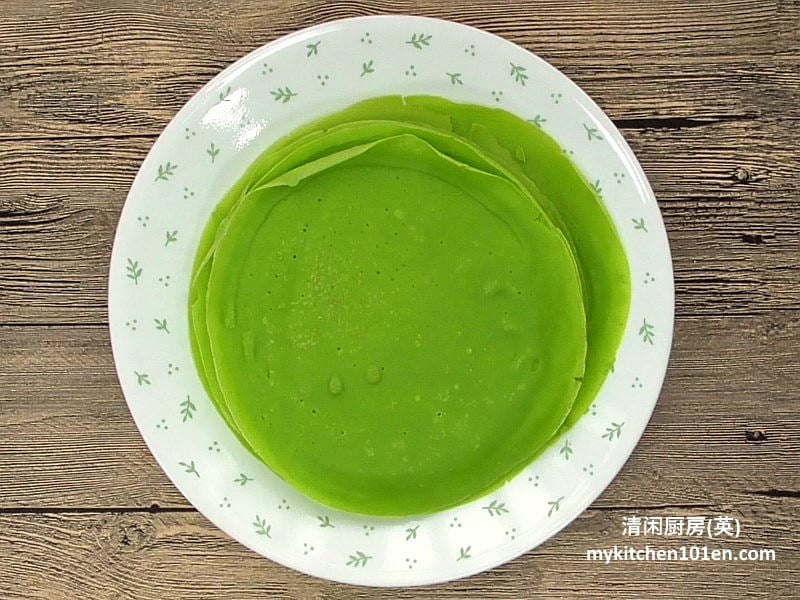
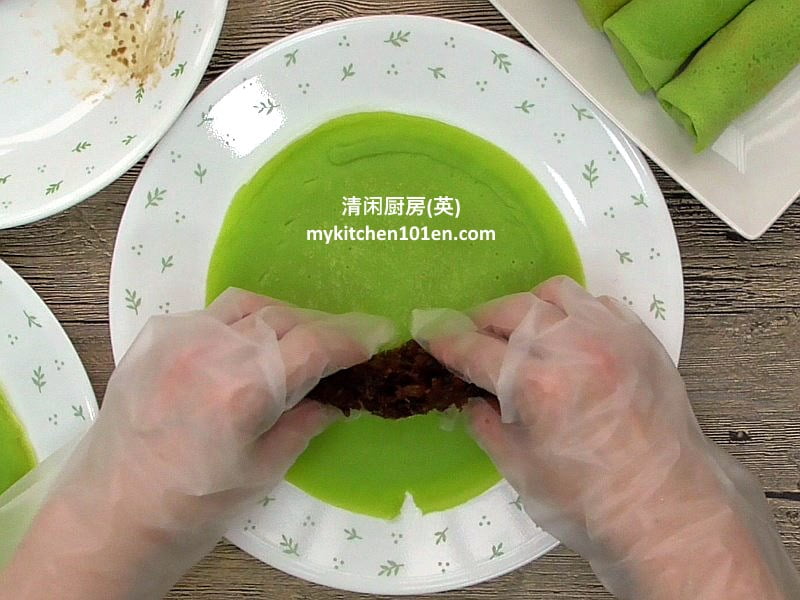
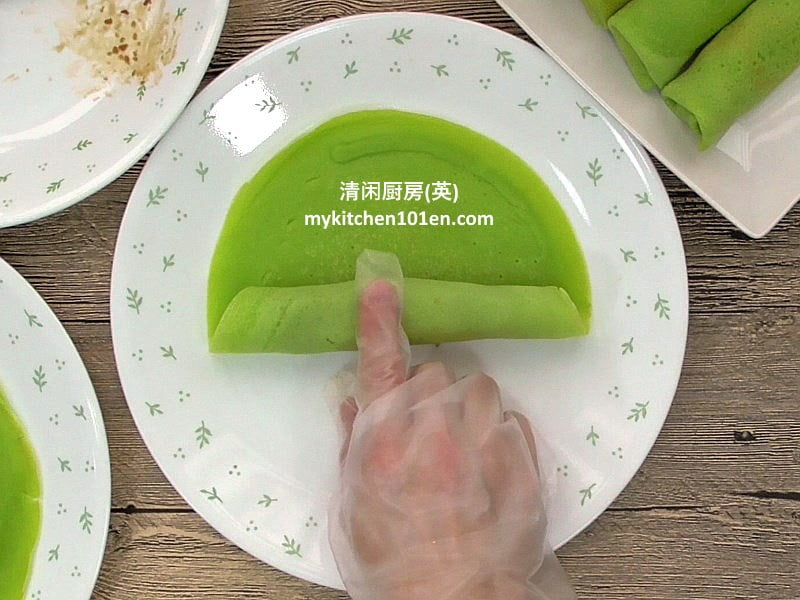
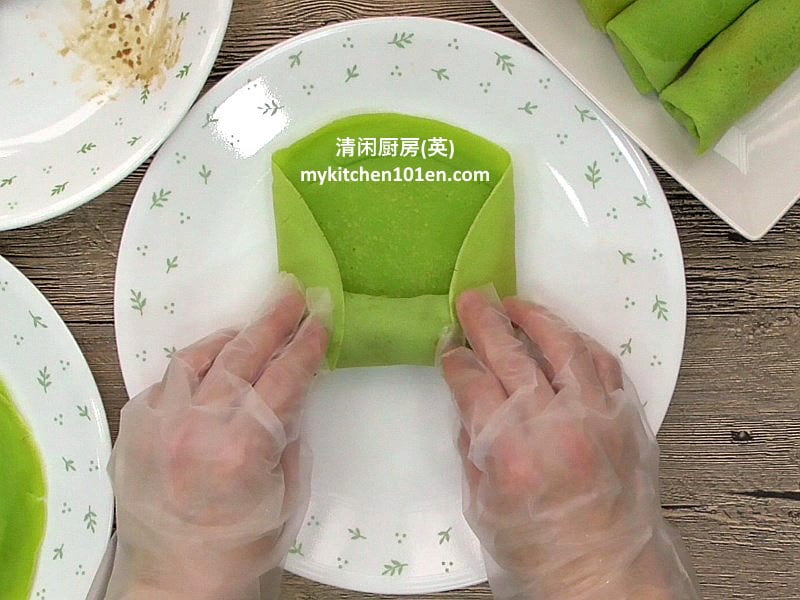
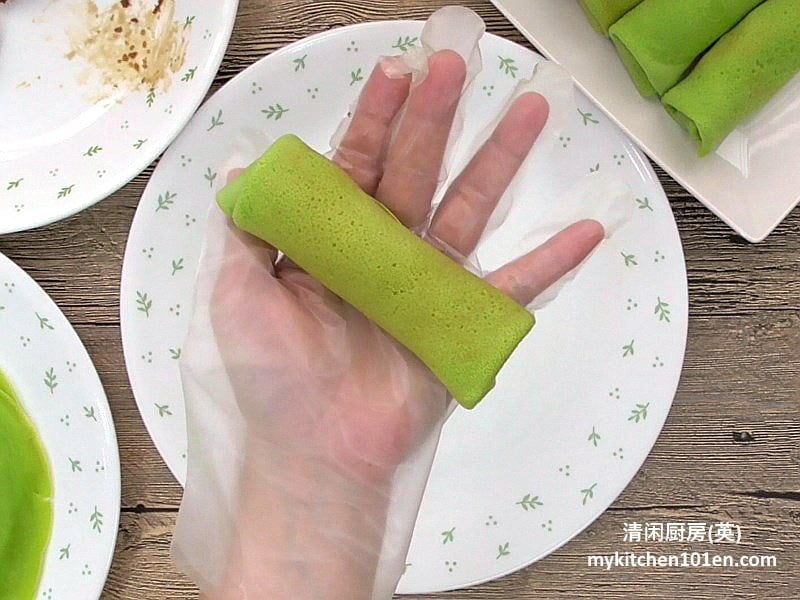
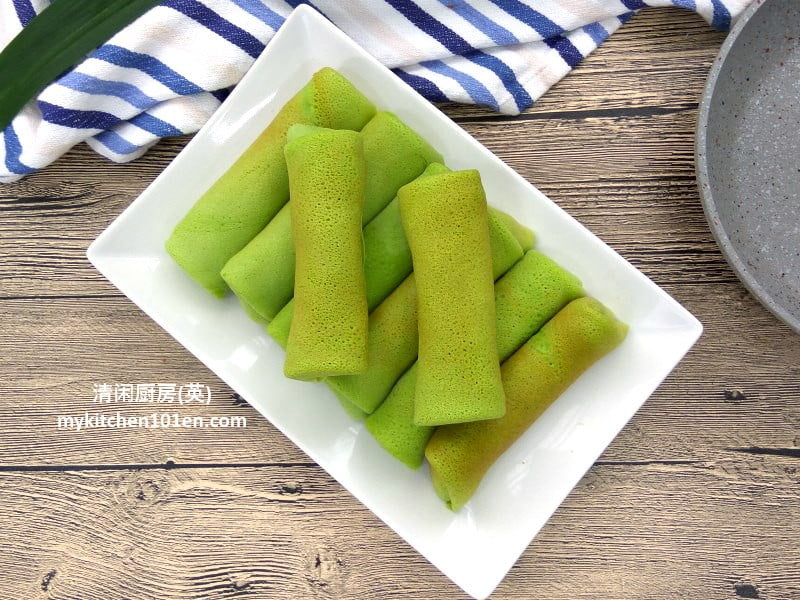
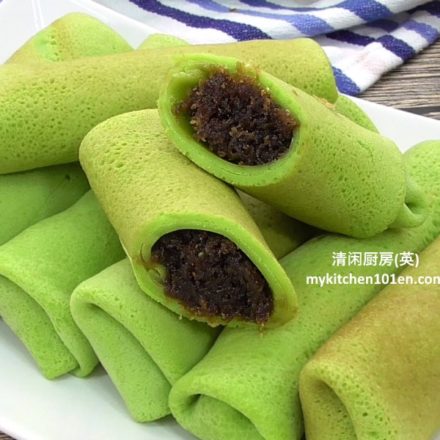
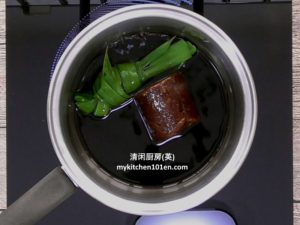
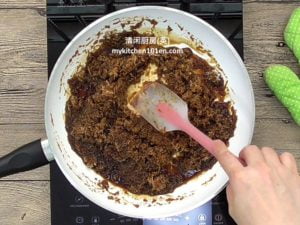
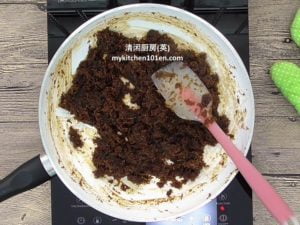
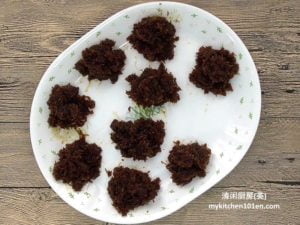
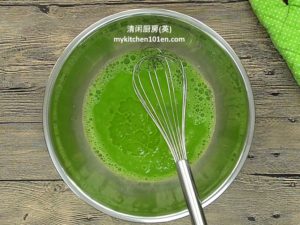
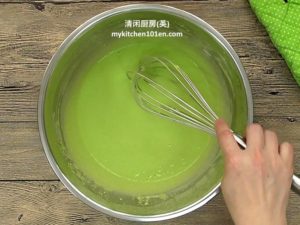
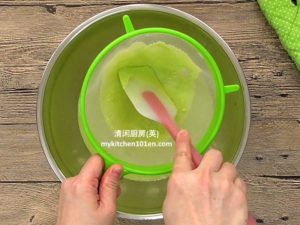
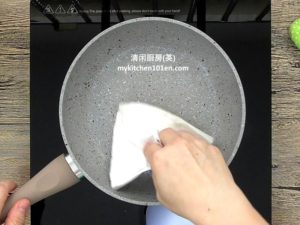

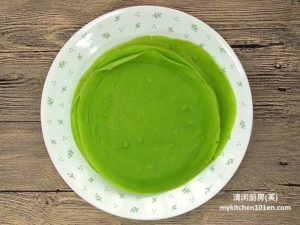
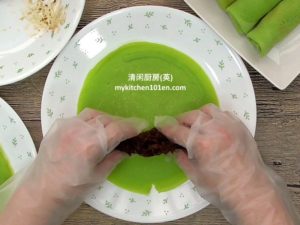
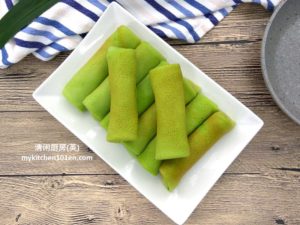
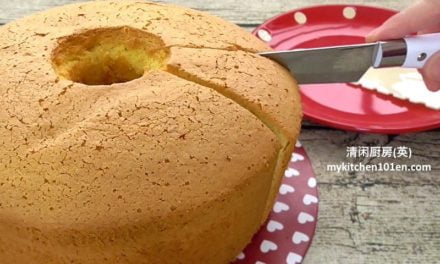

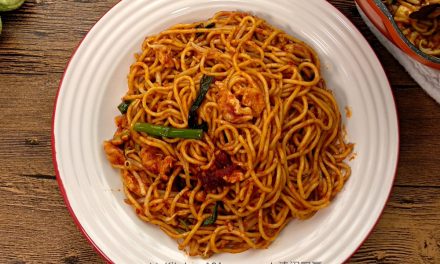
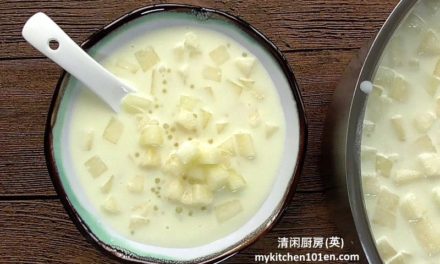
Always my favourite..yummy.m Thank you for sharing.
Its a good recipe.i try it already.my ketayap skin looking so nice ☺
My fav. I made this without eggs and add coconut milk in the batter. It’s yummy. My kids love it too. They call it “Alien pancakes”
Just looked it up. Like a sweet coconut pancake or roll up made from rice flour. Yum sounds kind of yummy. I’d try it.